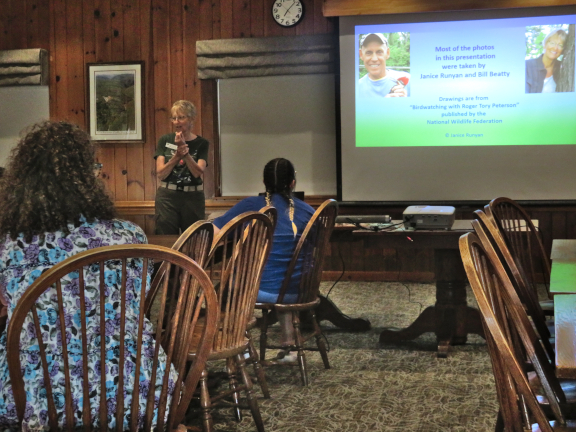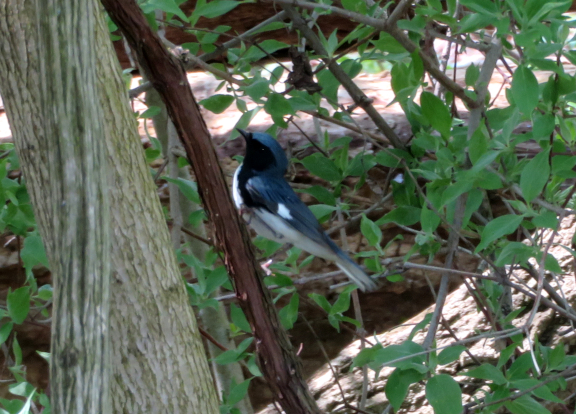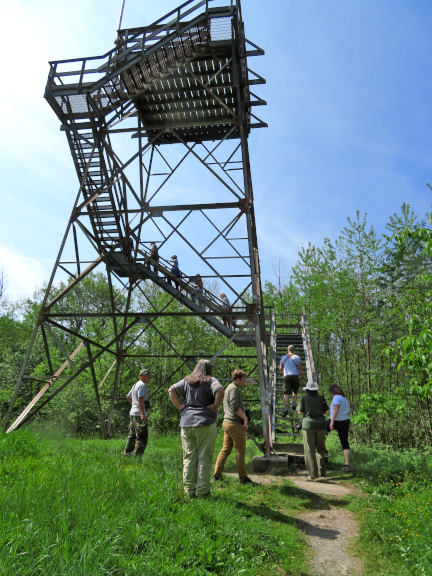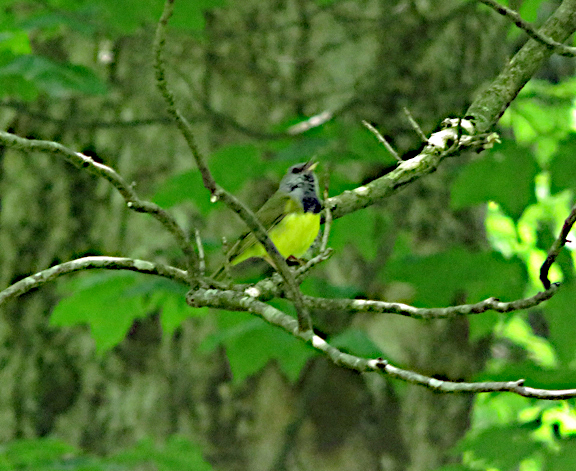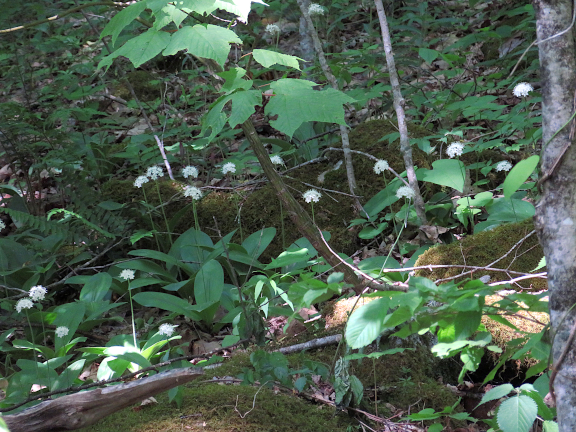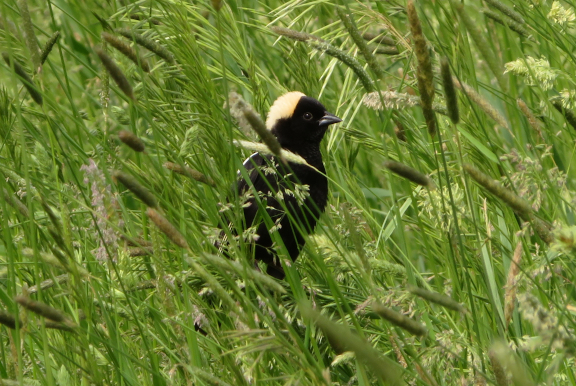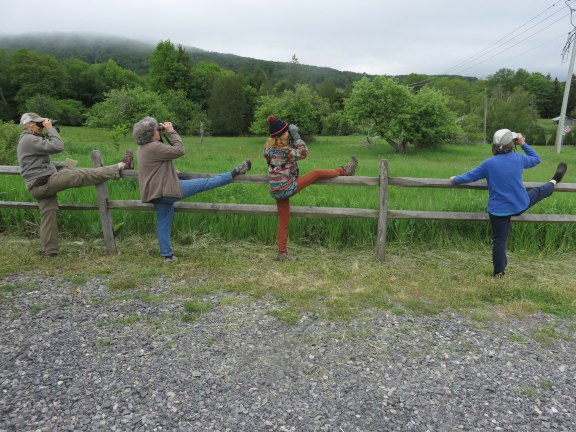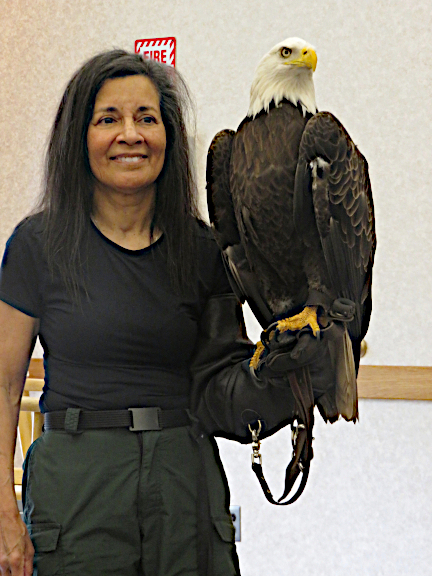The WV Mountain State Bird Festival, coordinated from Blackwater Falls State Park, is a wonderful spring treat. On our way there this year, Jan and I visited some special wild areas. Our first stop was a wetland we wanted to explore for a future field trip which will show a group some interesting plants in the area. We accidentally discovered a large area of Pink Lady’s Slippers (𝐶𝑦𝑝𝑟𝑖𝑝𝑒𝑑𝑖𝑢𝑚 𝑎𝑐𝑎𝑢𝑙𝑒) — 39 plants were in full flower and many others had already flowered or didn’t flower this year!
We were fascinated that the “slipper” part of the flower looks like a pair of lungs.
When Jan and I are exploring wetlands we wear shoes that attach securely to our feet. Some areas of the bog can be ankle-deep or deeper in muck and water, so any footwear not securely fastened can easily be sucked off our feet as we walk. (See our post https://wordpress.com/post/wvbirder.wordpress.com/337 )
This year has been dry, so the bog was unusually dry. We didn’t have much drying-off to do before we continued to Blackwater Falls State Park.
On Friday afternoon I presented a program called “Learning Bird Songs”, and on Friday evening Jan presented her “Birding Essentials for Everyone” program. The people who attended our programs and field trips were birders and nature-lovers of all levels and a variety of interests.
Our group met at 6 am on Saturday morning for a field trip to Stuart Memorial Drive in Randolph County.
This time of year the trees are leafed-out and, although we can easily hear the birds singing, they can be very difficult to see. Some of us did get glimpses of the Northern Parula, Black-throated Blue Warbler, and Chestnut-sided Warbler.
We stopped at a variety of habitats looking at and listening to a variety of different kinds of birds.
We were hoping to see and hear Mourning Warblers at Bickle Knob Tower and then eat lunch there. However, a large group had already arrived and were preparing to have a memorial service, making parking extremely tight. One person of their group came to the tower to warm up playing the bagpipes. It wasn’t the best situation for finding birds, so, after enjoying the amazing view from the top of the tower, we left to find a quieter, birdier lunch spot.
Later we heard a Mourning Warbler singing over and over again, but we weren’t able to see it. Some of us went into the woods to try to find it “just behind that tree over there”. Those who waited on the road glimpsed it as “a bird flying quickly away”. We did get lots of opportunity to learn the song.
Mourning Warbler song:
Another bird that is difficult to see is the Swainson’s Thrush, and we were lucky to hear two singing in competition. As with so many other birds we heard, we just couldn’t see either of them.
Swainson’s Thrush song:
Of course, we did find some other interesting creatures besides the birds…we always do.
Later that evening I presented a program on the “Flycatchers of West Virginia”.
On Sunday morning we met at 6:30 am for a field trip to the Freeland Boardwalk in the Canaan Valley National Wildlife Refuge. One of the first birds we encountered was a Bobolink in the field adjacent to the boardwalk. As usual we heard it singing before we could see it.
Bobolink song:
As an appropriate follow-up to my program on the previous evening, a few Willow Flycatchers were singing, and Alder Flycatchers seemed to be everywhere.
Swamp Sparrows were singing at several locations.
One of the highlights of the boardwalk was seeing a breeding pair of Green Herons. We first saw one skulking along one of the water courses apparently looking for food. Then they both flew to different perches and we all were able to get good views of them.
There were a number of Cedar Waxwings flying around and we could often hear their high-pitched, trilled “bzeee” song as we walked the boardwalk.
The extremely rare white form of the Pink Lady’s Slipper, which we had seen for the first time 5 years ago, was still there. We were glad to see that it had not been destroyed or removed by a misguided person who thought they could transplant it into their garden. That never works because of the complicated chemistry and fungi required by the plant, but sometimes uninformed people try and they end up destroying the plant so no one gets to enjoy it. It was lovely to see the plant thriving in its natural environment.
After the Freeland Boardwalk we made one more stop nearby to see if we could locate Henslow’s Sparrows. The grass in the fields where the Henslow’s like to nest was still too short for the liking of this bird and we didn’t hear or see any. But that didn’t dampen our spirits, as several of our group demonstrated “Ballet Birding”.
We were also entertained by a pair of nesting Brown Thrashers continually flying back and forth taking insects to their hungry chicks.
After lunch Jo Santiago presented an amazing program with live raptors. All the birds she uses in her programs are birds who have been rehabilitated from injuries, but are not able to be released back into the wild. They have become her family. Her program is one of the best I have ever seen, and I have seen many nature-related programs. Visit Jo’s website for more information about her Flying Higher programs — https://www.flyinghigherllc.com/
Jan and I are blessed to be able to meet and spend time with such enjoyable, Nature-loving people, like Jo, Paulita Cousin (naturalist at Blackwater Falls SP) and those attending our programs and field trips. We all had a fantastic time in the Nature of Wild and Wonderful West Virginia.




